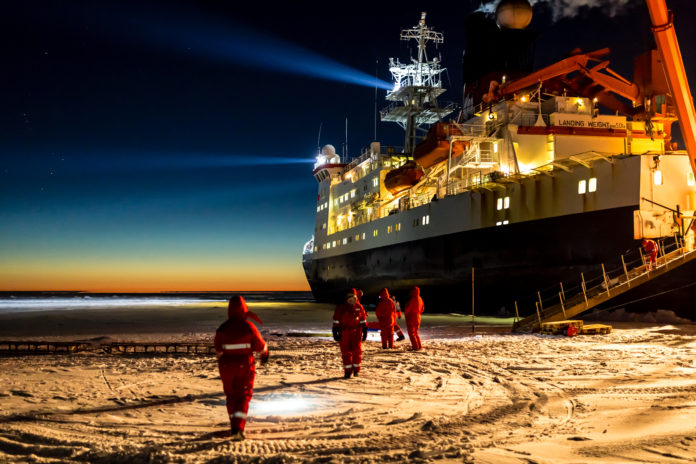Getting stranded on sea ice in the middle of the Arctic Ocean may sound like the beginning of a disaster movie, but a group of researchers from across the globe has recently done exactly that. It’s all in the name of better understanding the Arctic climate system and ultimately helping combat the global climate crisis.
The Multidisciplinary drifting Observatory for the Study of Arctic Climate, or MOSAiC, is the largest polar expedition in history. The team consists of more than 70 research institutes from 19 different countries worldwide, including Canada’s University of Calgary, University of Manitoba, University of Victoria, and University of Waterloo.
Over 300 researchers will also be present on site, conducting research over the course of the next year while RV Polarstern, the icebreaker ship they sailed in on, slowly becomes trapped in Arctic ice.
‘The Epicentre of Global Climate Change’
The overarching goal of the project is to learn more about the Arctic climate system and how it fits into global climate models. While the Arctic has long been known to be a crucial region of climate change, with warming rates more than twice the global average, many processes in its climate are poorly understood.
What’s more, projections of how the Arctic climate will change over the coming years are far more uncertain than anywhere else on the globe.
“The Arctic is the epicentre of global climate change,” said Markus Rex, leader of the expedition and professor at the Alfred Wegener Institute for Polar and Marine Research. “At the same time the Arctic is the region of the planet where we understand the climate system the least.”
The issue stems from a lack of observations. During the winter and spring, Arctic ice is so thick that even the most powerful research icebreakers from across the world are unable to penetrate it.
It’s for this reason that researchers know so little about Arctic climate cycles. It’s also why the MOSAiC expedition is stranding its team on an Arctic ice floe for an entire year. The only way to gather much-needed observations during the Arctic winter is to enter the Arctic region when the ice is still thin, and remain there year-round until it melts again.
The unprecedented observations the MOSAiC team plans to make consist of all the key pieces of the Arctic climate puzzle: observations of the atmosphere, the sea ice, biogeochemical processes, and more. By combining data from a vast range of research disciplines, the end result will be a more robust picture of how all these processes work together to regulate and change the climate both in the Arctic and around the world.
The expedition set sail in September, and has more recently decided on the ice floe that its members will spend the next year calling home.
Now, they wait for the frigid Arctic winter to begin. And while it sounds like the beginning of a disaster movie, it may well prove to be the solution to the biggest disaster currently looming over the world.
“Climate change in the greatest challenge facing humankind,” said Anja Karliczek, the German Federal Minister of Education and Research. “The MOSAiC mission is proof that, despite all of the setbacks in the worldwide climate protection process, there is still a strong desire at the international level to take on this challenge.”
While the team is busy conducting research, you can follow along live on their journey through the Arctic Ocean with the MOSAiC web app.









































